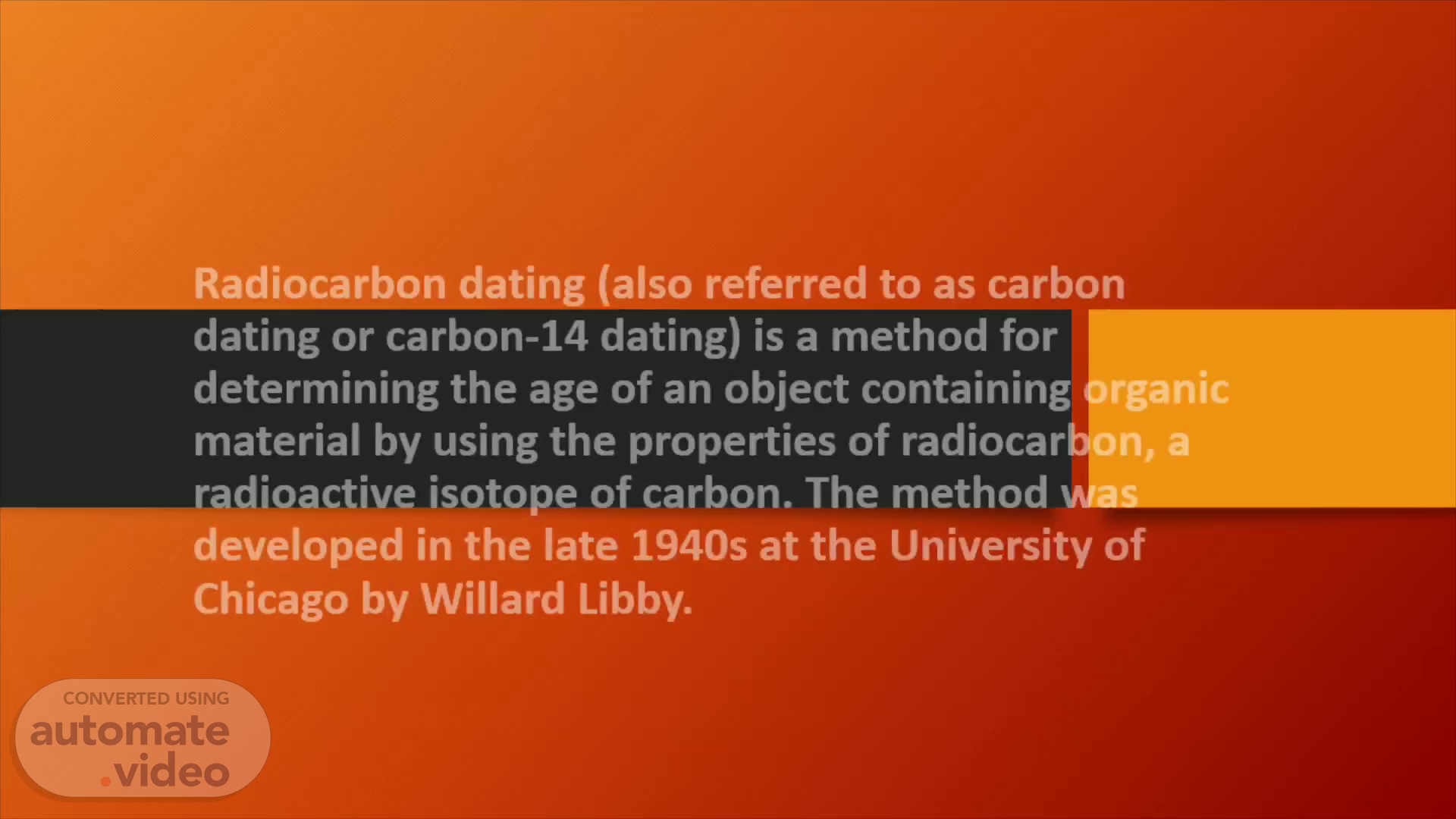Scene 1 (0s)
[Audio] Carbon Dating Radiocarbon dating (also referred to as carbon dating or carbon-14 dating) is a method for determining the age of an object containing organic material by using the properties of radiocarbon, a radioactive isotope of carbon. The method was developed in the late 1940s at the University of Chicago by Willard Libby..
Scene 2 (23s)
[Audio] What are the differences between carbon-12 and carbon-14? The difference between carbon-12 and carbon-14 is the number of neutrons in each atoms. Carbon-12 is more abundant than carbon-14 because carbon-14 undergoes radioactive decay. We use carbon-14 to date certain objects that are 60,000 years old or less.
Scene 3 (50s)
[Audio] Carbon-14 and the atmosphere Carbon-14 is produced in the atmosphere when neutrons from cosmic rays reacting with nitrogen atoms. After carbon-14 is formed its absorbed by plants which then is formed into oxygen which all organisms breath in..
Scene 4 (1m 9s)
[Audio] Fossil Dating When Living organisms die, they all have the same amount of carbon-14.When the scientists find fossils they will measure how much carbon-14 it has left in its body.After they measure the carbon-14 they will put the percentages in the formula and it will find out how long fossils have been in the ground..
Scene 5 (1m 30s)
[Audio] Decay reaction of carbon-14 When carbon-14 is formed it has nitrogen-14 in it which has qualities of gamma radiation.This type of radiation can break down carbon-14. The half life of carbon-14 is 5730 years which is how long it takes for a half sample to decay..
Scene 6 (1m 54s)
[Audio] Limitations The limitations of using carbon-14 is that you can only date objects back about 60,000 years old. They have found different elements that can date objects back as far as 49,000,000,000+ years..
